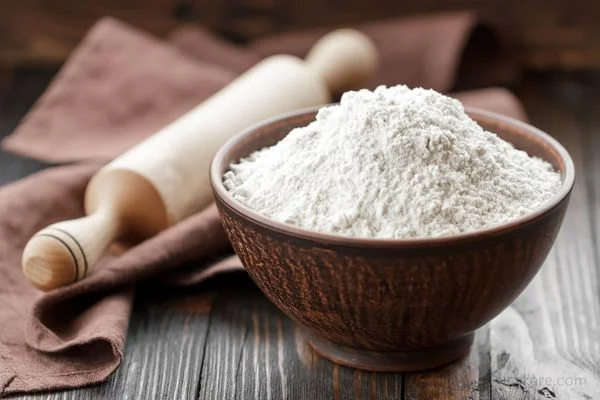If you love baking, you already know that flour is a key ingredient in almost every recipe. It’s hard to imagine baking without flour, but have you ever stopped to wonder what role it actually plays in your baked goods?
In this article, we will dive deep into the topic and explore what flour does in baking, how it affects your baked goods, and more.

What Does Flour Do in Baking?
Flour is the backbone of baked goods. It provides structure, texture, and flavor. Without flour, your cakes would be flat, your cookies would be crumbly, and your bread wouldn’t rise properly. Flour is a crucial ingredient in baking, but what does it actually do?
- Provides Structure:
Flour provides structure to baked goods by forming a framework that holds everything together. When flour is combined with a liquid (usually water or milk), it forms gluten. Gluten is a protein that gives dough its elasticity and helps it rise. Without gluten, your baked goods would be dense and heavy.
- Affects Texture:
The type of flour you use can affect the texture of your baked goods. All-purpose flour is the most versatile and can be used in a variety of baked goods. Bread flour has a higher protein content, which makes it ideal for bread and other yeast-based baked goods. Cake flour has a lower protein content and is perfect for delicate baked goods like cakes and pastries.
- Imparts Flavor:
Flour can also affect the flavor of your baked goods. Some types of flour, like whole wheat flour, have a nutty, earthy flavor that can add depth to your baked goods. On the other hand, bleached all-purpose flour has a more neutral flavor, making it a good choice for recipes where you don’t want the flavor of the flour to overpower the other ingredients.
How Does Flour Affect Baking?
- Leavening:
Flour plays a crucial role in leavening, which is the process of making baked goods rise. When flour is combined with a leavening agent like yeast or baking powder, it helps to create air pockets in the dough or batter, which causes the baked goods to rise.
- Binding:
Flour also helps to bind ingredients together in baked goods. This is especially important in recipes like bread, where the dough needs to be kneaded and shaped.
- Browning:
Flour can also affect the browning of your baked goods. The sugars in flour react with heat to create a golden brown color on the outside of your baked goods.
FAQs
It depends on the recipe. Different types of flour have different protein content, which affects the structure and texture of the baked goods. If a recipe calls for a specific type of flour, it’s best to use that type to achieve the desired result.
Yes, but it can be tricky. Gluten-free flour doesn’t contain gluten, which is the protein that gives baked goods their structure and texture. You may need to add other ingredients like xanthan gum to help your baked goods rise and hold their shape.
Flour should be stored in an airtight container in a cool, dry place. It’s best to use flour within 6 months of purchase to ensure freshness.
